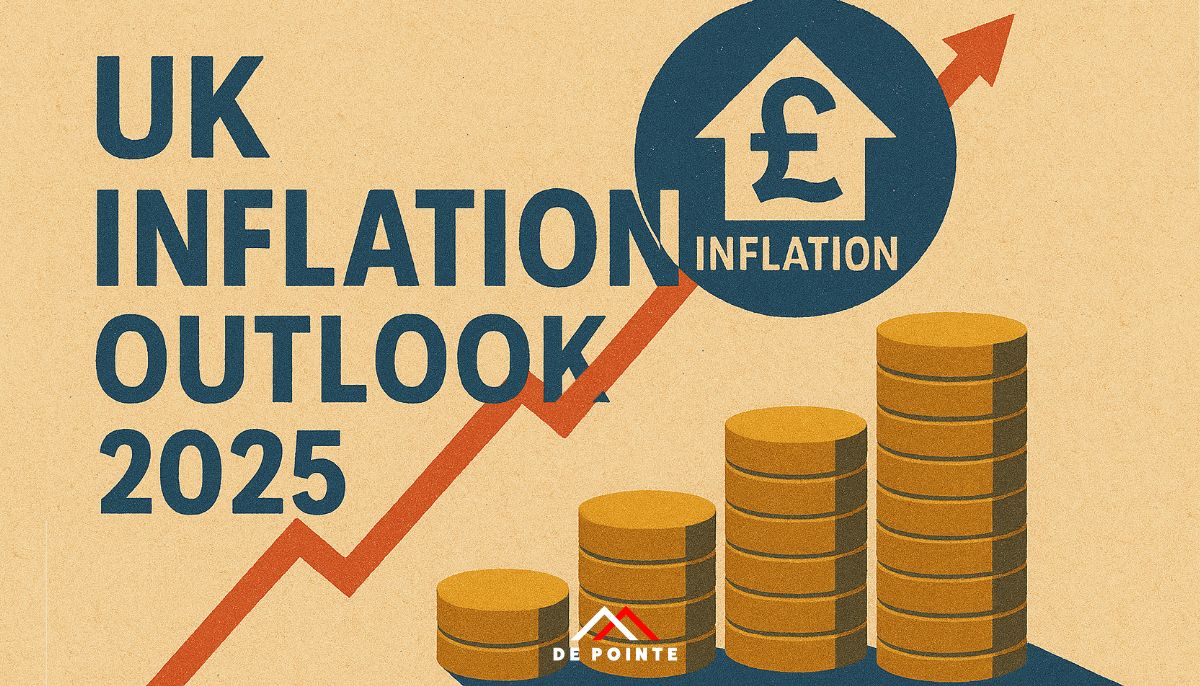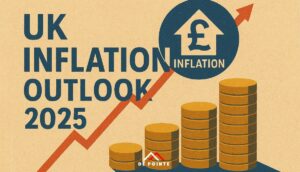Article

As of May 2025, inflation in the United Kingdom remains a pressing concern for policymakers, businesses, and investors. Although recent data suggests that headline inflation is gradually easing, the underlying forces indicate that price pressures may persist – or even rise – later in the year. This poses significant implications for portfolio construction, income generation, and capital preservation strategies. For investors, navigating a potentially re-inflating environment requires awareness of both macroeconomic indicators and responsive investment approaches.
The Current UK Inflation Landscape: A Respite or the Calm Before the Storm?
The Office for National Statistics reported a Consumer Prices Index (CPI) increase of 2.6% in the 12 months to March 2025, down slightly from 2.8% in February. This has sparked cautious optimism that inflation is returning toward the Bank of England’s long-term target of 2%. However, projections from the Bank’s Monetary Policy Committee suggest that inflation could rise again to 3.7% by the third quarter of 2025 before tapering in late 2026 and early 2027.
This expected rebound has its roots in both domestic and international economic dynamics. While the inflation narrative is no longer dominated by pandemic-era supply chain disruptions or the immediate fallout of the Ukraine conflict, several new factors have emerged that could keep inflation above target in the medium term.
What’s Driving Rising UK Inflation in 2025?
1. Energy and Utility Costs
Energy remains a significant driver of inflationary risk. While prices have moderated from their 2022-2023 peaks, wholesale gas and electricity costs rose once again in early 2025 due to reduced European reserves and geopolitical frictions in the Middle East. The UK’s energy regulator, Ofgem, recently approved an increase to the price cap, set to take effect in July 2025.
Water companies in England and Wales are also expected to raise household bills substantially following approval for new infrastructure investments. These regulated price rises are directly inflationary and will likely hit consumers and the service sector hardest.
2. Persistent Wage Growth and Labour Tightness
Wages in the UK have continued to rise, particularly in the services sector, where labour shortages remain acute. The National Living Wage increased by over 9% in April 2025, boosting income for many workers – but also raising costs for employers. While higher wages support household spending, they also contribute to what the Bank of England describes as “second-round effects”: inflation driven not by external shocks, but by a domestic cycle of rising wages and prices.
3. Corporate Margin Rebuilding and ‘Greedflation’
A more controversial yet growing concern is the behaviour of large corporations maintaining high prices to rebuild profit margins post-crisis. This phenomenon – coined “greedflation” – has been noted by policymakers including Bank of England’s Catherine Mann, who warned that companies may be slow to pass on falling input costs to consumers. This price stickiness could delay disinflation in sectors like food, construction materials, and household goods.
4. Currency Pressures and External Shocks
The pound sterling has shown weakness in recent months, particularly against the dollar, as the US Federal Reserve holds rates higher for longer. A weaker pound makes imports more expensive, particularly for energy and food, which are priced globally. Furthermore, looming trade frictions – such as possible tariffs under a second Trump presidency – could exacerbate this inflationary tendency if the UK is caught in a wider global trade war.
The Bank of England’s Balancing Act
The Bank of England has begun cutting interest rates, reducing the base rate to 4.25% in May 2025. This marks the fourth consecutive cut aimed at stimulating growth in a sluggish economy. However, internal disagreement remains. Chief Economist Huw Pill recently remarked that the current pace of reductions may be too aggressive, risking an inflation rebound. The Bank’s latest forecasts suggest that UK inflation will not return to the 2% target until at least Q1 2027.
This has significant implications for borrowing costs, investment sentiment, and the wider economic recovery. Lower rates can boost asset prices and borrowing but may also fuel another round of inflation if introduced prematurely.
What This Means for Investors
With UK inflation showing signs of persistence, investors must consider how best to protect and grow their capital in a less predictable price environment. Here are several strategic responses:
1. Fixed Income Adjustments
Traditional government bonds can underperform in inflationary environments. Investors should consider:
- Short-duration bonds to reduce sensitivity to rate changes.
- UK Inflation-linked bonds such as UK Index-Linked Gilts.
- Floating-rate corporate debt for more dynamic yield exposure.
2. Equities with Pricing Power
Inflation disproportionately affects companies with limited ability to raise prices. Focus on:
- Consumer staples and energy companies that can pass on costs.
- High-margin businesses in healthcare and technology.
- Global firms with diversified revenues and strong balance sheets.
3. Alternative Assets and Real Assets
Physical and real assets tend to hold value in inflationary periods:
- Commodities like gold and industrial metals serve as traditional hedges.
- Infrastructure funds often have inflation-linked revenues.
- Real estate, particularly in sectors with inflation-adjusted leases.
De Pointe Research continues to advocate for a diversified allocation to alternative assets. These not only buffer inflation but can also deliver strong long-term returns. For instance, art investments—whose values are often tied to scarcity and collector demand—have historically outperformed equities during inflationary spikes.
4. Currency Risk Management
With a weakening pound on the horizon, international investors should review their currency exposures. Currency-hedged instruments or selective overseas diversification into stronger currencies can help preserve purchasing power.
While the UK inflation picture in 2025 is less severe than during the height of recent crises, it remains dynamic and uncertain. Investors cannot assume a smooth return to price stability. Instead, they should prepare for a new normal: a world where inflation remains elevated longer than expected and responsive investment strategies are essential.
By staying informed, diversifying wisely, and reassessing asset allocations, investors can not only weather the inflationary environment but potentially benefit from the opportunities it creates.
Contact the team at De Pointe Research for personalised guidance on navigating inflation with alternative investments, such as gold, art, or infrastructure.





